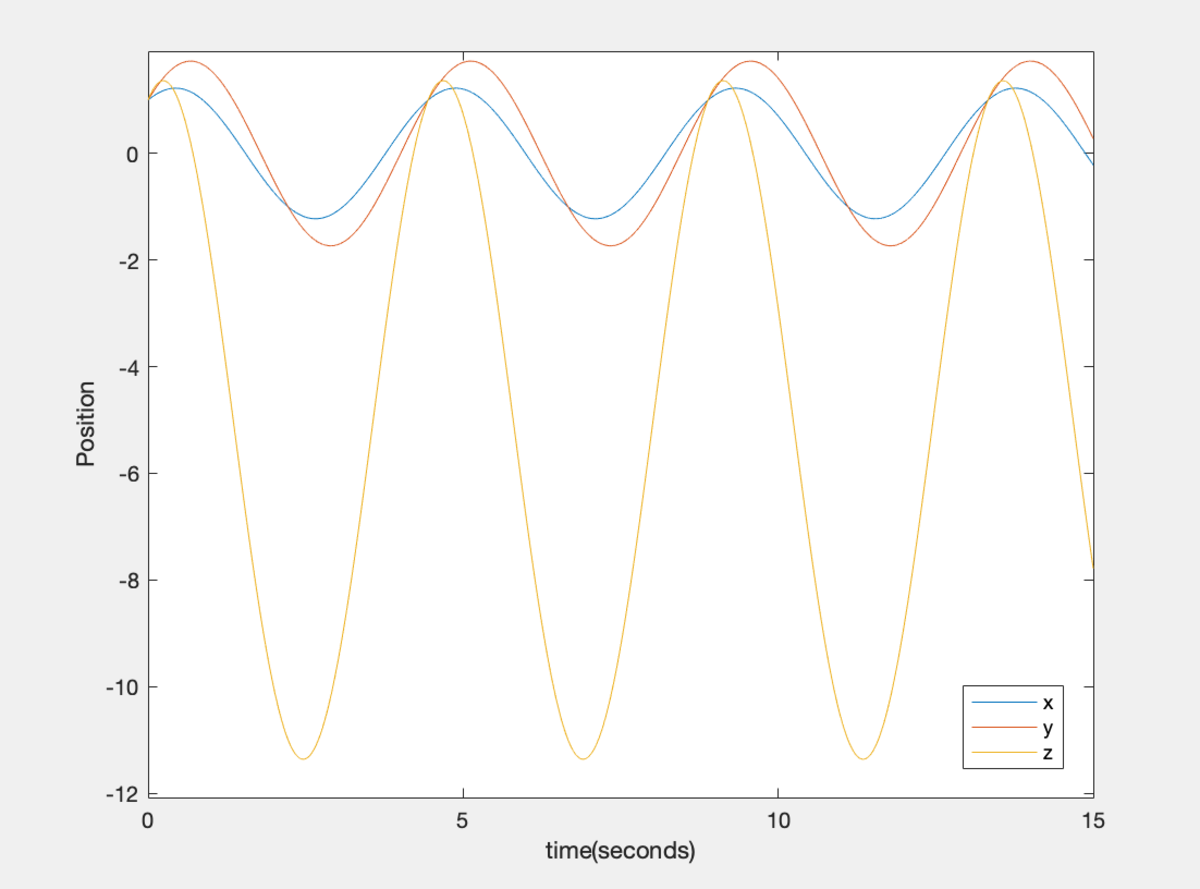3D Spring Dynamics
A particle of mass is connected to one end of a spring of force constant and natural length . The other end of the spring is fixed at the origin. The ambient gravitational acceleration is in the negative direction.
At time , the particle is at position with velocity .
How far from the origin is the particle at time ?
Note: This is an ideal problem for practicing Lagrangian mechanics and seeing how it results in Newtonian equations
The answer is 7.793.
This section requires Javascript.
You are seeing this because something didn't load right. We suggest you, (a) try
refreshing the page, (b) enabling javascript if it is disabled on your browser and,
finally, (c)
loading the
non-javascript version of this page
. We're sorry about the hassle.

At any instant of time, the kinetic energy of the system is:
T = 2 x ˙ 2 + y ˙ 2 + z ˙ 2
The potential energy is the sum of the gravitational and spring potential energy:
V = 1 0 z + x 2 + y 2 + z 2
Applying Lagrange's equations from this point:
d t d ( ∂ x ˙ ∂ T ) − ∂ x ∂ T + ∂ x ∂ V = 0 d t d ( ∂ y ˙ ∂ T ) − ∂ y ∂ T + ∂ y ∂ V = 0 d t d ( ∂ z ˙ ∂ T ) − ∂ z ∂ T + ∂ z ∂ V = 0
Evaluating this results in a system of three linear de-coupled differential equations:
x ¨ + 2 x = 0 y ¨ + 2 y = 0 z ¨ + 2 z = − 1 0
General solution:
x ( t ) = A 1 cos ( t 2 ) + B 1 sin ( t 2 ) y ( t ) = A 2 cos ( t 2 ) + B 2 sin ( t 2 ) z ( t ) = A 3 cos ( t 2 ) + B 3 sin ( t 2 ) − 5
The unknown constants can be solved by applying the initial conditions. The required answer is:
D = ( x ( 1 5 ) ) 2 + ( y ( 1 5 ) ) 2 + ( z ( 1 5 ) ) 2 ≈ 7 . 7 9 3